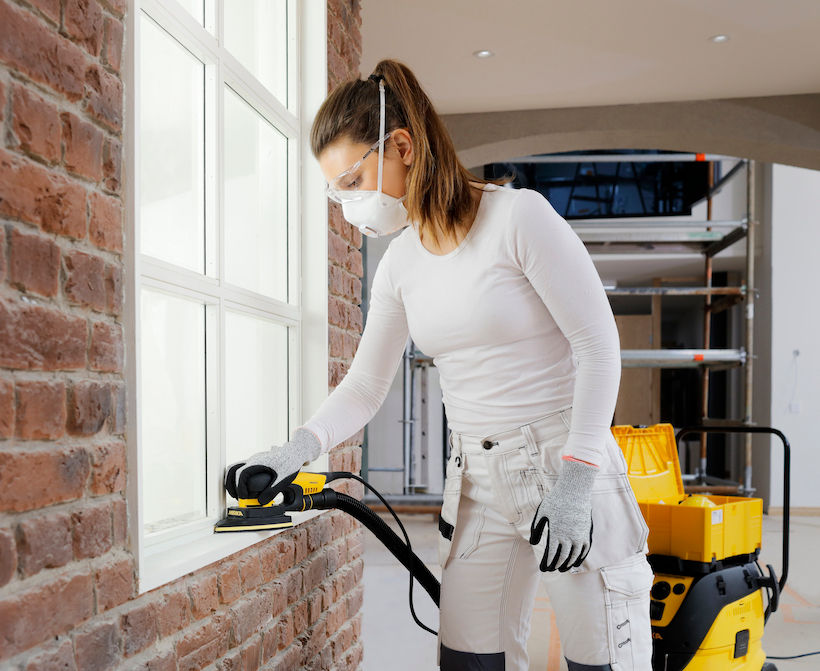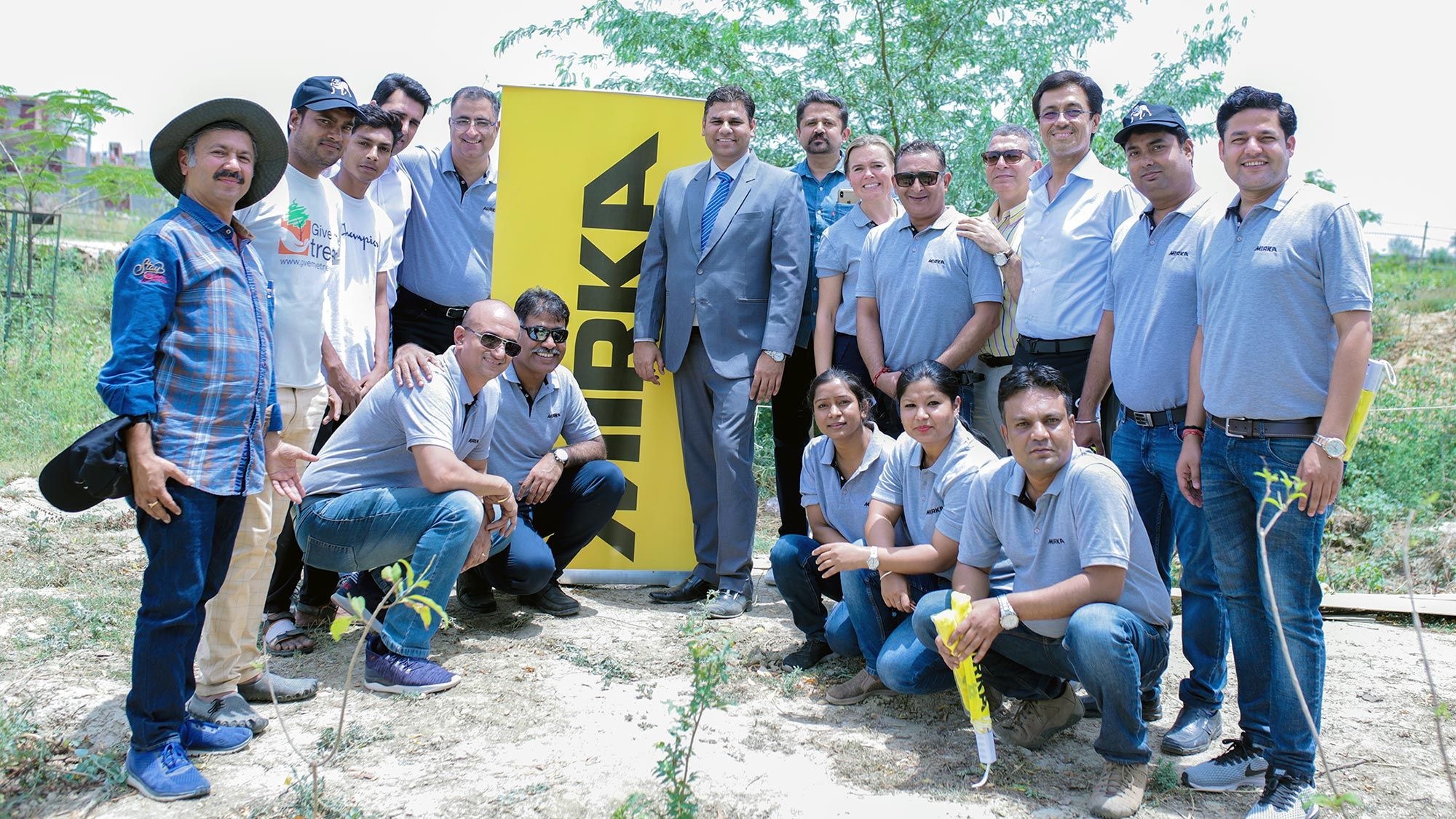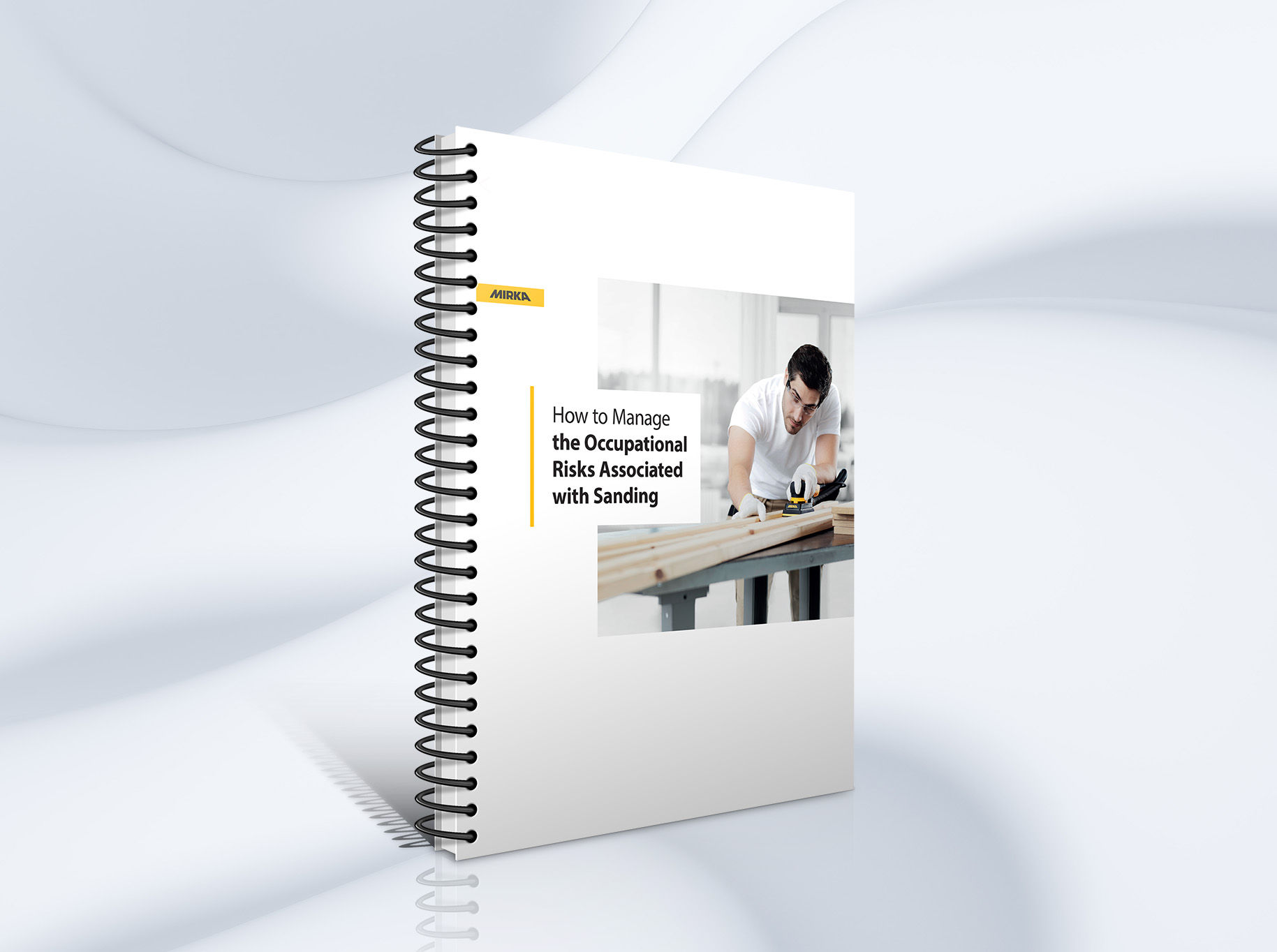2+1 years
Register Your Tool
All Mirka power tools have a standard two-year warranty. Get an additional 1 year of warranty free of charge by registering your tool within 30 days of purchase.
Keep your tools in excellent shape on myMirka where you can register, manage and order repair for your tools.
Replenish your stock, access marketing materials, view sales guides and read about upcoming product launches.
Employees are your company's most important assets. Mirka sanding solutions reduce exposure to harmful sanding dust. The benefits of dust-free sanding aren't just improved health and reduced risks, but also improved bottom-line results.
The most dangerous types of dust are the ones with small particles. They are called PM2.5 and they can be inhaled deep into the lungs. Mirka's dust-free solutions are 99.97% effective at removing particles smaller than 0.3µm in size.*
* High Efficiency Particulate Air (HEPA) Filtration
For dust-free sanding
Today, sanders and abrasives are made more and more efficient, with a focus on dust-free applications. This development places higher requirements on the dust extractors.
Mirka’s range of dust extractors and accessories meet the demands of the market and of the health and safety authorities. Our dust extractor range is designed for dust-free sanding with both electric and pneumatic sanders as well as hand sanding blocks.
Mirka® Abranet Yellow
Abranet® Yellow delivers a cleaner, more efficient sanding experience for professional painters and drywallers.
The well-balanced combination of softness and the fast-cutting net structure makes this abrasive ideal for sanding ceilings and walls.
Abranet Yellow is compatible with rotary and random orbital wall sanders and performs well with hand sanding blocks, pole sanders, and other manual methods. It's available in two formats and three grit options, making it suitable for a range of tasks from heavy material removal to fine surface finishing.
Introducing the Mirka® DEXOS 1217 M dust extractor
Compact, powerful, and designed for maximum efficiency, this dust extractor pairs perfectly with all sanders for a clean, seamless workflow.
Key Features:
Most sanding naturally creates dust, and this is something Mirka takes seriously. By using on-tool dust extraction, dust can be safely removed from the working surface without it ending up in the air, or your skin, or your lungs, or anywhere you don’t want it to go. Mirka dust extractors deposit the dust safely in an easily emptied bag.
The most dangerous dust is so-called invisible dust that can stay airborne for a long time, building up in the lungs. It has already been in the air long before it settles down on the surfaces.
There are differences between types of dust. For example, paint residue can be highly toxic and dust from hard wood is extremely harmful if inhaled for long periods of time.
Even though Mirka’s dust-free solution removes almost all dust from the air, protective gear should always be used to protect your health. Please refer to instructions provided by your local authorities.
Yes and no. Compatible sanding papers are available, but to get the full dust-free performance, net-like abrasives must be used: the more holes there are in an abrasive, the more efficient are its dust extracting capabilities. To be able to offer an effective abrasive with maximum dust extraction, we developed Mirka Abranet.
To maintain dust-free performance, filters, dust bags and abrasives for a dust-free solution should be replaced regularly. In addition, we recommend regular cleaning of your sander.
Case Dust-tree:
Air pollution is a serious issue in India. To improve the air quality for example, in Delhi, the decrease of emissions is paramount. We can, however, use trees to help our common cause. Local peepal tree (Ficus religious) is capable of catching approximately 27 kilograms of dust every year.
Since our dust-free Abranet solution collects about 2.3 kilograms every day, together with Give me trees we are going to plant one peepal tree in Delhi for every 500 Abranet sanding disc used monthly.
First trees are already planted in spring of 2019 and there are more to come!
Read all about our efforts for the environment on our sustainability platform.
Discover our other products
Net Abrasives are improtant part of the Mirka dust-free sanding solution in their various sizes, forms and grit options.
Get Your Free Copy of Our Whitepaper
In this whitepaper, we consider the hazards associated with the task of sanding and the harm that can result from prolonged exposure to those hazards.
We go into the deep and explore:
Stay informed and inspired with exclusive updates
Discover surface finishing solutions, tips, and the industry trends – for professionals like you.


